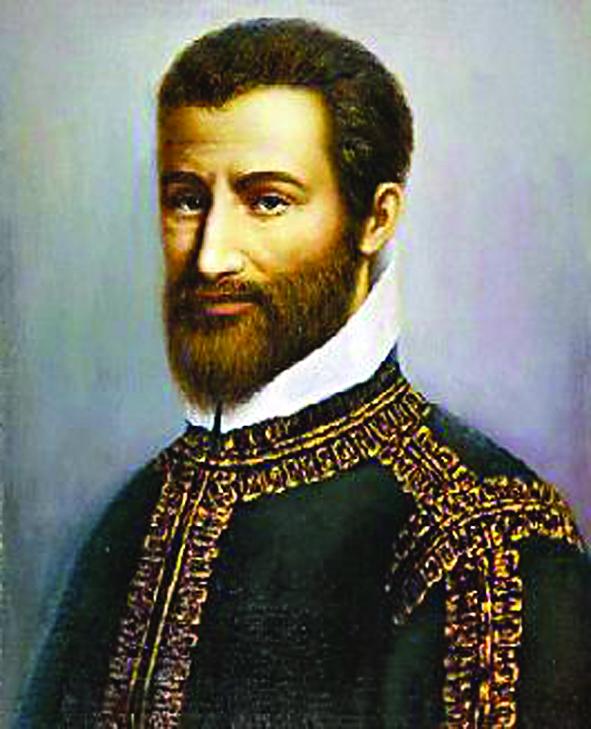Following in the tradition of Mel Gibson’s groundbreaking masterpiece The Passion of Christ, the film Nicaea promises to be the second in what I hope will be a growing trend in the cinematic presentations of the divine and human drama of the 2000-year history of the Roman Catholic Church.
The executive producer and driving force behind Nicaea is American Catholic layman Charles Parlato, a former Wall Street hedge fund manager and currently a private investor. One March morning in 1991, he awoke with the idea of capturing the Council of Nicaea (325 A.D.), one of the major turning points in the history of Christianity, on film. It’s been a long and difficult road, but Parlato is on the threshold of success.
With preliminary production tasks completed, the filming of Nicaea is set for early 2014 in the famed Cinecittà Studios in Rome, site of the filming of Ben-Hur (1959) and The Passion (2004). Nicaea’s distinguished production staff includes Rob Draper as director, Enzo Sisti as executive producer (he was also executive producer for The Passion) and Francesco Frigeri as design producer (he too filled that role for The Passion).
Historic Background on Nicaea
While most Christians are acquainted with the Nicene Creed, the profession of the Christian faith held by the Roman Catholic Church and common also to all Eastern Churches and major Protestant denominations, details surrounding the First Ecumenical Council of Nicaea in 325 A.D. and its importance in the life of Christianity are not generally well known by the layman, especially the pivotal role played by the Emperor Constantine, who gathered the Catholic bishops from throughout the Roman Empire under one roof for an ecclesiastical Council which would define and affirm the basic tenets of Christianity forever.
From the historical perspective, the epic story of Nicaea is also the epic story of the life of Constantine the Great. Indeed, among the spectacular opening scenes is the famous Battle of the Milvian Bridge on October 28, 312, at the gates of Rome, where Constantine’s outnumbered troops, their shields bearing the emblem of Christ in whose name Constantine would conquer, defeat the militarily superior army of Maxentius, one of Constantine’s three major rivals, leading the way to Constantine’s final victory and the consolidation of the entire Roman empire under his rule.
The Emperor Constantine delivered the early Christian bishops, deacons, and laymen of the 4th century from the persecutions of the Emperor Valerius Diocletianus (Diocletian, 285-304), opening the door to the spread of Christianity throughout the known world.
The Council of Nicaea
In attendance at the Council of Nicaea were more than 300 bishops from around the world, most of whom did not know each other, with their entourages of priests, deacons, theologians, secretaries and scribes. Among the bishops were many who had endured persecution for the Faith, and many bowed before them to kiss their holy wounds.
Pope Sylvester I did not himself attend the Council, but he was represented by two legates, Vitus and Vincentius, and he later approved of the Council’s decisions.
Although Constantine convened and opened the Council, he did not participate in the debates and final voting of the assembled bishops. The emperor’s main interest in the Council was the restoration of peace and unity among the Christian leadership, particularly with regard to the threats posed by the Arian heresy, which denied the divinity of Christ and the triune nature of God.
It was at the Council of Nicaea that St. Athanasius made his debut on the world stage as deacon secretary and theological advisor to Bishop Alexander of Alexandria, and as hammer of the Arian heretics, including their leader, the priest Arius, from Alexandria in Egypt.
The Lesson of Nicaea
In addition to a multitude of inspirational insights to encourage and inspire the faithful in these difficult times, the movie Nicaea will offer a sobering antidote to the oft-held Pollyanna-ish myth that all was peace, light, love and tranquility in the early Church. Clearly, as Nicaea will demonstrate, this was not the case.
Indeed, after the Council, Athanasius would find himself in years of struggle with Arius and his minions, turning the Roman Empire upside down over just one Greek word: homoousios (“of the same substance” or “of the same essence”), the one word that could be understood to teach the Orthodox faith against what the Arian heretics held. Perhaps the makers of Nicaea will be inspired to produce a sequel on the life and times of St. Athanasius.
In the meantime, I hope every Inside the Vatican reader will take time to visit the website for Nicaea at www.nicaeathemovie.com and enjoy the short trailer at https://www.youtube.com/watch?v=0OagoV8wLNg with its magnificent music, and perhaps also to post a comment of encouragement and support at www.facebook.com/nicaeathemovie and at www.facebook.com/nicaeacommunity for the men and women who have embarked on this great cinematographic adventure for the glory of God and for his Holy Church.




Facebook Comments